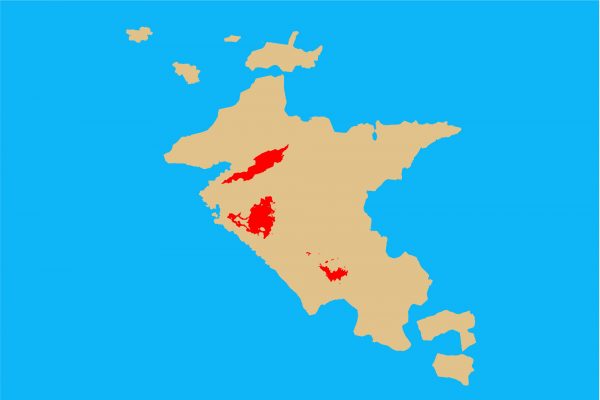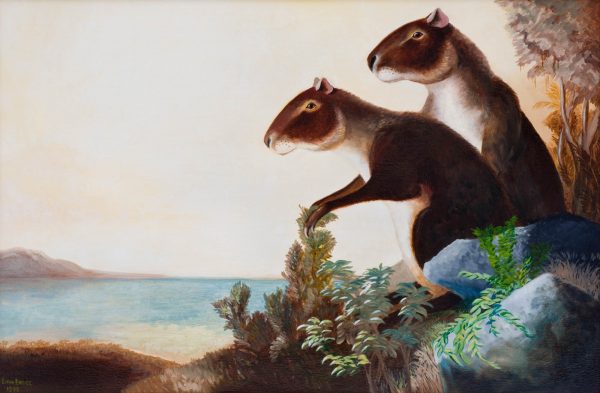Could people be forced to leave St. Martin due to rising sea levels and worsening storms? As islanders, climate it is a real threat. Think of all the low-lying areas that could be submerged: Simpson Bay, Sandy Ground, Philipsburg, Grand Case, Orient Bay and many more. But if humans do lose our ability to live on St. Martin due to rising seas, we won’t be the first to suffer that fate.
St. Martin’s relationship with the sea has changed over millions of years. For a time, the island was totally underwater. The coral reefs that grew then became the limestone of the Lowlands and Billy Folly.

There were also times when the sea was much lower. During ice ages, water is locked in glaciers, and the sea level drops. And when the sea level drops, St. Martin gets big. If the sea drops 100 meters, St. Martin is about the size of Trinidad. It connects to Anguilla and St. Barts and well beyond.
Prehistoric super St. Martin was huge—big enough to support rodents of unusual size. The Blunt-toothed Giant Hutia is one of the most astounding St. Martiners of all time. We only know it from fossils, but those fossils suggest it could have weighed over 200 kilograms. This makes it one of the largest rodents of all time.
Giants often evolve on islands, like the giant tortoises in the Galapagos. St. Martin’s giant hutia probably arrived on the island as a much smaller hutia. On St. Martin, it didn’t have predators to hide from, so it didn’t have to stay small. There also weren’t any big grazing animals to compete with, so the hutia could get big and eat all the leaves.

Hutia fossils from St. Martin, Anguilla and St. Barts actually show a surprising range in sizes. Some scientists believe it may have changed size depending on the sea level. When the sea level was lowest and the island the biggest it was at its biggest, 200 kilos. During periods when the island was smaller, it may have shrunk down to 50 kilos.
One estimate shows that this might be possible over 80 generations. On a shrinking island, the smallest of each generation survive and the hutia adapts to fit the space it has. But this process takes time. If the sea rises faster than it can change size, the hutia would be too big to survive in the space available.
We don’t know for sure what happened to St. Martin’s giant hutia, but we can guess. A bit more than 10,000 years ago, the island went from Trinidad-sized super St. Martin to three islands each less than 2% that size. If it couldn’t shrink fast enough, it wouldn’t have enough land to survive. Rising seas would have inundated it to extinction. That sad fate is implied by the giant hutia’s scientific name: Amblyrhiza inundata.
It is amazing to imagine giant hutias roaming St. Martin, like capybaras the size of black bears. It is perhaps just as amazing to imagine ice age super St. Martin. Look out to Anguilla or St. Barts and imagine land between and beyond as far as the eye can see.
What do you see when you look out over St. Martin? Tell us by writing in to The Daily Herald or to info@lesfruitsdemer.com.

